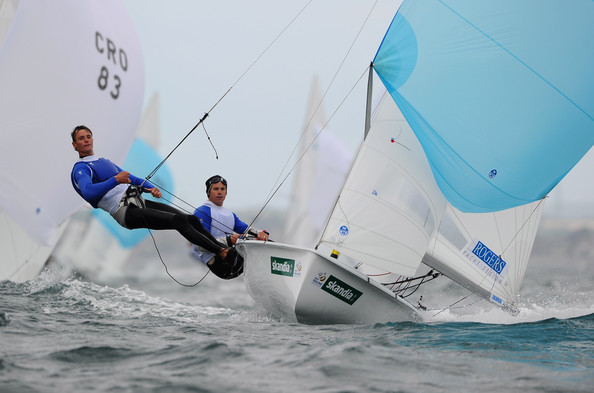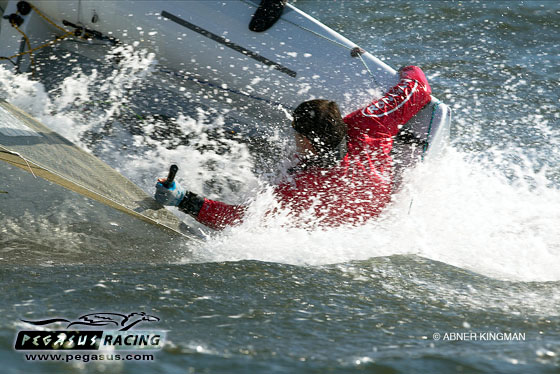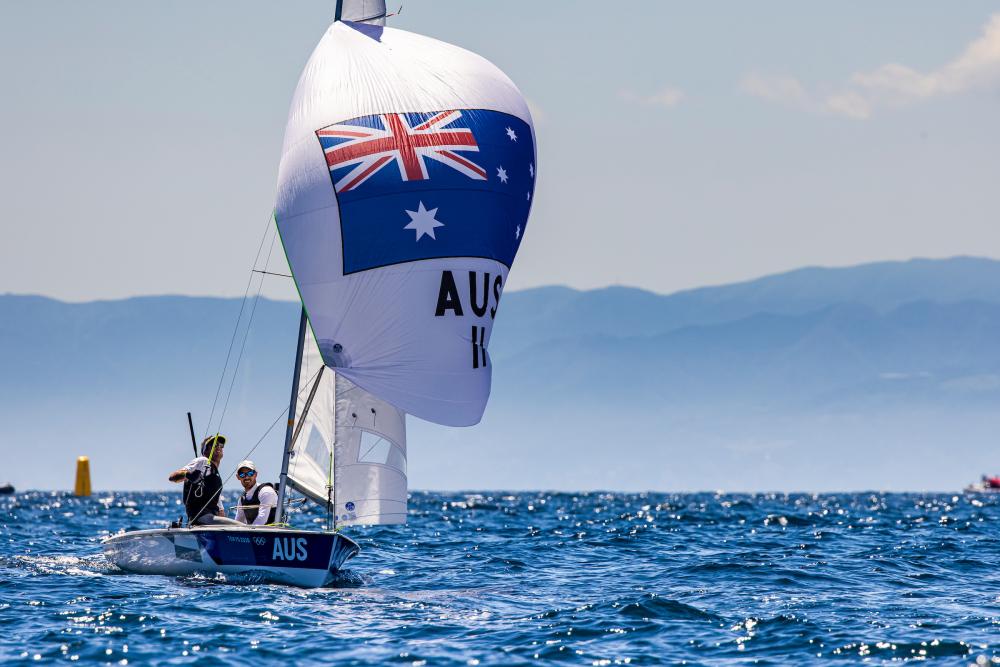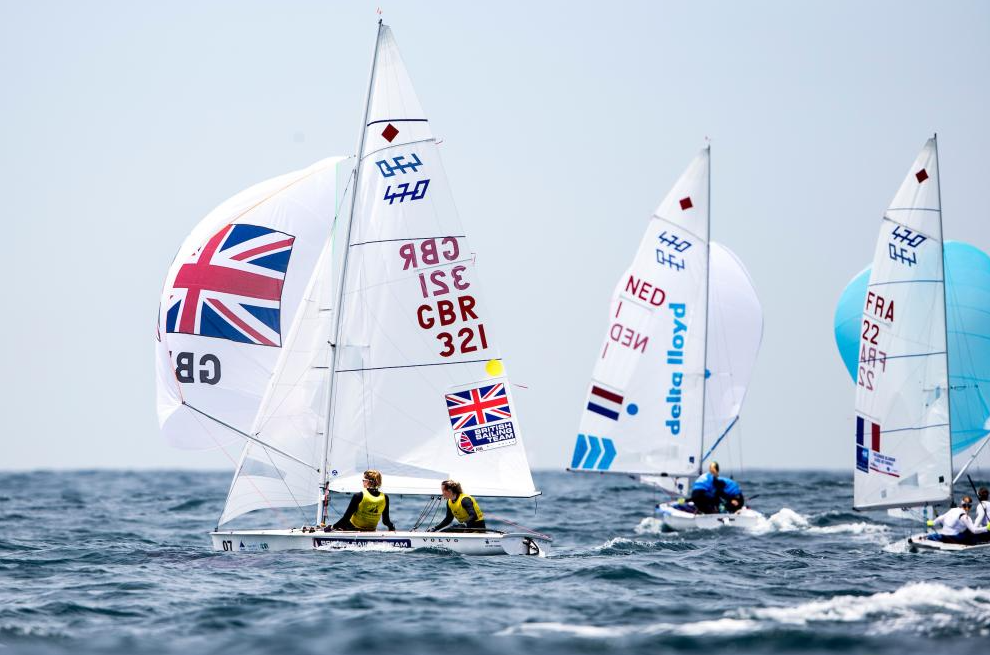Much as I love my Musto Skiff, there’s no substitute for the buzz of being part of a team that is all pulling in the same direction. I don’t know about you, but for me, when you’re sailing in a team the highs are higher and the lows are lower. Sometimes when you’re working well together, it seems like the team can be greater than the sum of its parts. But if you’re at loggerheads, then things can fall apart very quickly.
Anyone who races on keelboats with six or more people knows all about the politics that can soon creep into the crew dynamic. It’s why sailing is such a great team building activity - because managing the egos and the politics on a sailing boat can be great practice for managing egos in an office.
At the Olympic level, great teamwork is one of those magic ingredients that can make the difference between a medal or not, or even qualifying for the Games, or not. It’s interesting to see how Luke Patience and Chris ‘Twiggy’ Grube have done better when sailing in separate partnerships than they did when sailing together in the 470. After four or five years of hard work, they still couldn’t break through to the top flight of the 470 scene. But having gone their separate ways, both reached a much higher level of achievement.
When Twiggy started crewing for Nick Rogers, they had less than a year to get their act together. They sailed a sensational Skandia Sail for Gold to come 4th overall, were 5th at the Olympic Test Regatta, and finished 10th overall at the Worlds in Perth last December.
Meanwhile, after amicably splitting with Twiggy, Luke got together with one of his old mates, Stuart Bithell, and made a late run at the 2009 470 Worlds, with just five days’ practice together. Having spent the last five years sailing full-time, Luke had got disillusioned with his lack of progress in 470 and hadn’t really worked out what ‘life after Twiggy’ might look like.
With no pressure of expectation, Luke and Stu hitched the 470 on to the car and started the long drive to Copenhagen. By the time they got there, they’d decided to embark on a Tornado campaign together (before it was finally confirmed that the Tornado was no longer an Olympic class). “We reckoned together we were a bit big for the 470, and we thought it might be more fun flying around at 20 knots, so we were going Tornado.”
A week later, when they were spraying champagne over each other on the podium of the 470 World Championships, silver medals round their necks, they looked at each other and said: “What do you reckon, 470, then?” Of course, that Copenhagen silver could have been a flash in the pan, but the subsequent two and a half years have proven that it was just the start of many great things to come. A clutch of World Cup medals later, and another World Championship silver medal in Perth, and now the 25-year-olds find themselves on the way to London 2012.
Let’s not forget that Luke and Stu thought they might be a bit big for the 470, but their results have since proven otherwise. Luke is strangely secretive about their exact weights - not sure what some of his rival helms could do to match his diminutive stature other than chopping their legs off, which would make hiking a challenge. But he says that ‘guess the weight’ is one of their rivals’ most popular questions, and one at which he’s keen to keep them guessing. Luke is one of the smallest - I’d hazard a guess at around 60kg; and Stu is one of the biggest in the 470 boat park - not much change from 80kg would be my finger-in-the-air guesstimate.
But they’re not slow, not even in the light stuff. Their ‘killer app’, a gamechanger in the 470 since they pioneered the concept back in Copenhagen 2009 is, well, I can’t actually use the word in a family magazine. But it involves the crew unhooking from the trapeze, grabbing the trapeze ring in his hands and vigorously and rhythmically bouncing the trapeze line with sheer brute force and strength. Actually, as Luke points out, it’s quite a bit subtler than that. There’s a lot of timing involved, as well as careful body placement. But what this ‘bouncing’ - for want of another word - achieves is the ability to either put the bow down whilst hanging on to a hard mainsail leech for a bit longer; or you can actually waft the boat almost into the eye of the wind, potentially out of a difficult lee-bow situation.
Both in terms of tactical and boatspeed options, this bouncing technique is revolutionary. It became a possibility when the ‘yellow flag’ rule came down from 12 knots to 8 knots minimum wind speed. Once the breeze tips over 8 knots, the 470 class rules allow for the yellow flag to be flown, signifying that in terms of artificial propulsion - pretty much anything goes. Of course other teams have adopted the technique too, but not necessarily with same level of success as the pioneers. Whilst as a team Luke and Stu are relative newcomers to the 470, they have not been afraid to question the status quo, and they have come up with some great innovations. The Australian team of Mat Belcher and Malcolm Page have swept almost everything before them in recent years, but Luke and Stu will go to Weymouth as a team believing they have every much as right to take gold as the antipodean favourites.
Roll Tacks - April 2012
Related Articles

Roll Tacks - April 2013
It’s a fascinating time in the Olympic cycle, especially with the sailors of both sexes getting to grips with new boats - and each other - in the compulsory boy/girl Nacra 17 catamaran.
Read More

Sailing Talk Podcast - A few surprises from Skandia Sail for Gold 2011

Read More

The Olympic scene is hotting up with just over a year to the London 2012 Games. Skandia Sail for Gold threw up a few surprises recently, with some old names coming back from the dead to displace the young upstarts. Justin and Andy look at how the form book is running, and who’s looking good for gold next year...

Expect the unexpected: How the champions adapt in the moment
Read More

Thinking on your feet is one of the signs of a great sailor, especially when disaster rears its ugly head. Two World Championship winning sailors, Adrian Stead and Cam Lewis, reveal two examples of quick thinking that saved the day...

Fight for supremacy in the Men’s 470
Read More
For most of the past five years since Rio, the fight for 470 supremacy has swung back and forth between three men’s teams - the Swedes, the Spanish and the Australians.

Will Mills fulfil her 470 destiny?
Read More
While it was always possible for women to compete in Olympic Events in the ‘open era’, the reality was that very few did.
